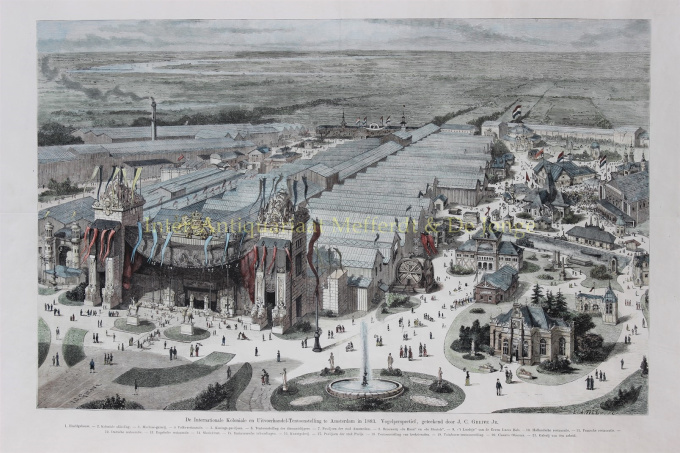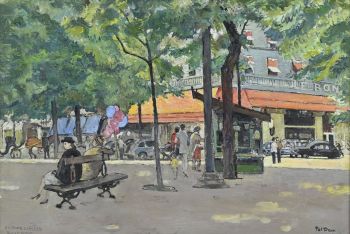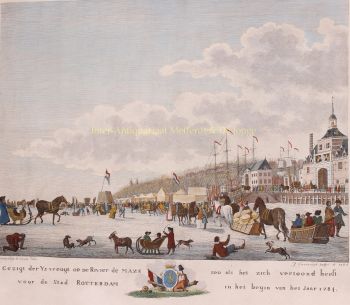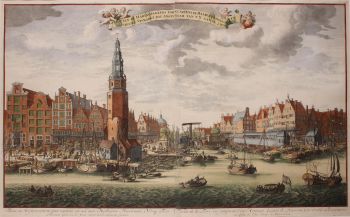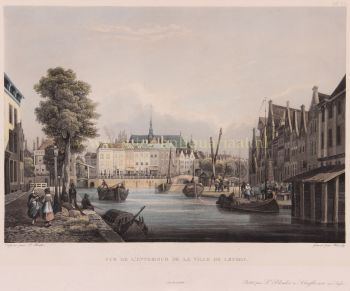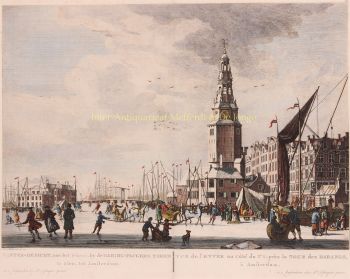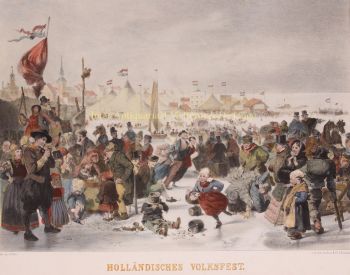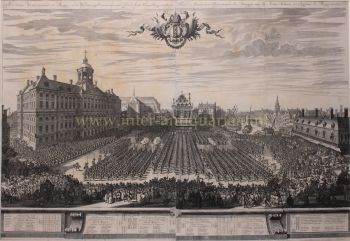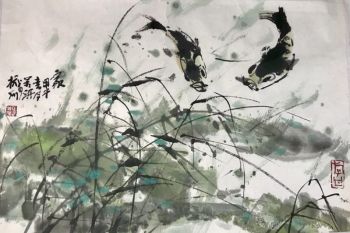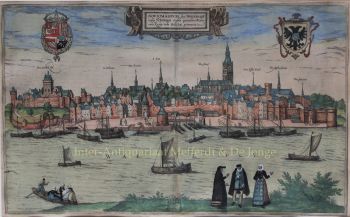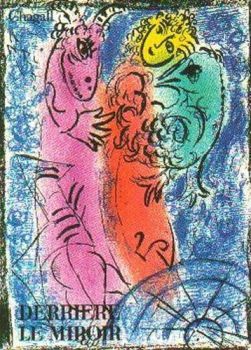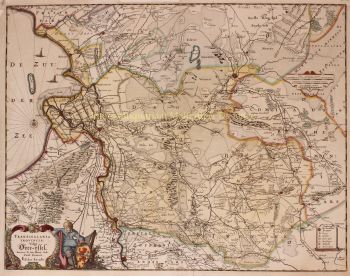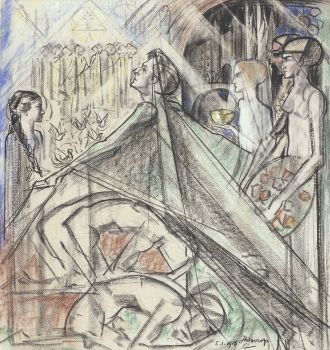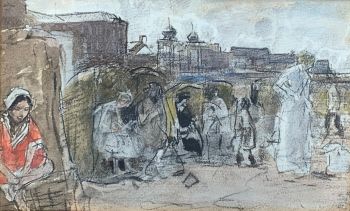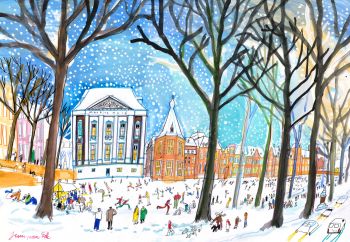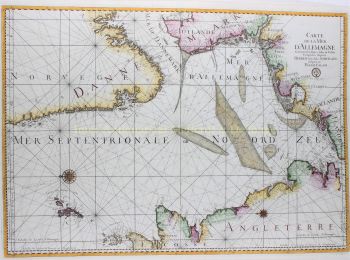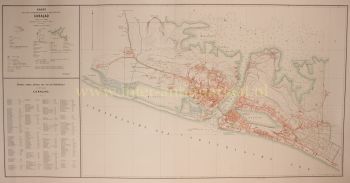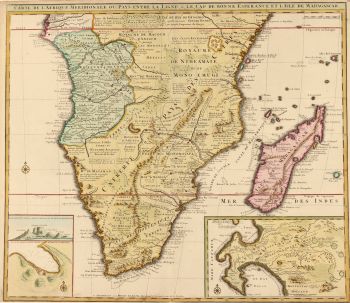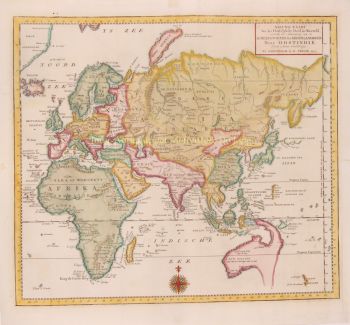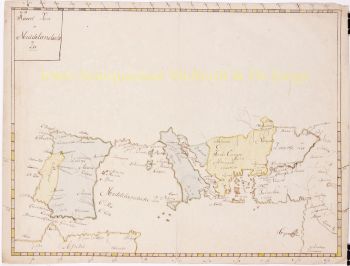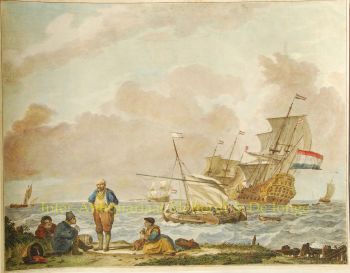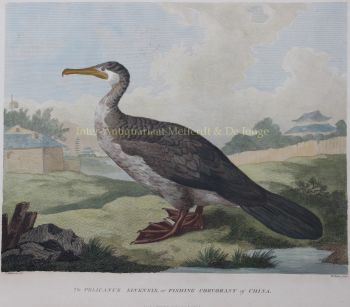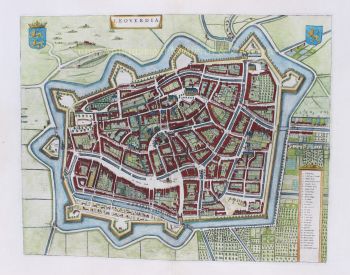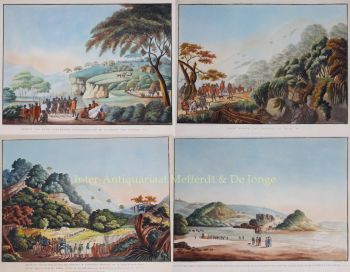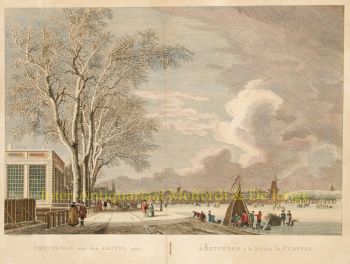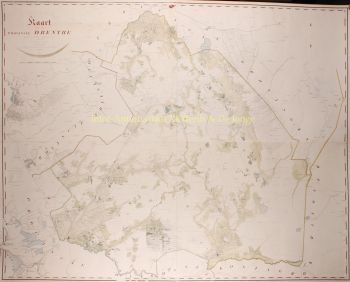Amsterdam- exposition mondiale 1883
J.C. Greive
€ 625
Inter-Antiquariaat Mefferdt & De Jonge
- Sur l'oeuvre d'art
BIRD FLIGHT PERSPECTIVE OF THE WORLD EXHIBITION IN AMSTERDAM "International Colonial and Export Trade Exhibition in Amsterdam in 1883", wood engraving "drawn by J.C. Greive Jr.". Later hand-coloured. Measures 47 x 64 cm. In the first half of the nineteenth century, the Netherlands experienced little economic growth. By the 1860s, however, the trend began to reverse, partly due to the opening of the North Sea Canal, which brought sea-going vessels from the North Sea directly to Amsterdam. At the same time, the national railway system improved rapidly and Amsterdam's new central station opened in 1879. International exhibitions promoted economic growth and tourism. As Amsterdam sought to emulate the cosmopolitan flair of cities such as Paris and London, a world exhibition would be an asset to the city. The Frenchman Edouard Agostini saw potential in an exhibition in the Netherlands and sent brochures to influential Amsterdam entrepreneurs. As the Netherlands was not really known, except for its rich colonial past, the idea was launched as the "International Colonial and Export Trade Exhibition". Although it was received somewhat sceptically, the planning continued. The Dutch government was initially reluctant to set aside funds for the event, but a persistent Agostini eventually found support from a Belgian investor, who was willing to build the main building in exchange for all entrance fees and the proceeds from renting out exhibition space. The Amsterdam exhibition was the first international exhibition with a colonial theme. Colonial houses were built and inhabited by indigenous people to give visitors the opportunity to get to know the exotic. At later exhibitions, indigenous villages complete with "savages" became the standard, demonstrating the supposed superiority of Western culture. Moreover, the exhibition was unique in that it emphasised the trade in industrial products rather than manufactures. A wasteland area on the south side of Amsterdam (nowadays the Museumplein) was chosen as the location. The rectangular main building measured 300 x 120 metres and was built over a ditch. Next to the main building was the Dutch colonial pavilion measuring 125 x 75 metres. The colonial pavilion contained, among other things, various agricultural products, cultural treasures and indigenous weapons. The colonial pavilion and the Machinery Gallery enclosed a triangular area for smaller pavilions, including one for the city of Paris. In front of the colonial pavilion was a smaller building for the various overseas territories. Although only the Netherlands and Belgium held extensive exhibitions, foreign participants came from most other countries in Europe, as well as China, Japan, India, Turkey, the Middle East and Africa, the United States and Canada. The rest of the grounds served as an amusement park, with the bandstand in the centre surrounded by German, Dutch and English restaurants. There was also a pavilion for the city of Amsterdam, a Japanese Bazaar, small shops, an exhibition of church jewellery and a horticultural exhibition. A canal, crossed by a bamboo bridge, crossed the site and accommodated a Chinese junk. The main building, designed by French architect Paul Fouquiau, was built of wood, with a glass roof, but it was covered with plaster and painted canvas to resemble marble. The facade was a 50-metre wide wall with a 25-metre tower at each end and decorated with plaster elephants. Between the two towers hung a huge piece of cloth with an Indian design. The interior design was by the Belgian Gedeon Bordiau, who also designed the main building at the 1885 World Fair in Antwerp. The total exhibition area was more than 60,000 square metres. Thousands of visitors visited the exhibition and stayed in new hotels such as the Americain and Krasnapolsky, bought souvenirs and boosted the city's economy. When the exhibition closed on 1 November, more than a million tickets had been sold. Price: Euro 625,-
Êtes-vous intéressé par l'achat de cette oeuvre?
Artwork details
Related artworks
- 1 - 4 / 24
- 1 - 4 / 12

